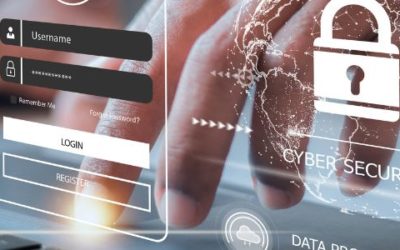How to Prevent Business Email Compromise (BEC) and Protect Your Company
Business Email Compromise Is on the Rise — Here’s How to Stay Ahead of It
Business Email Compromise (BEC) has become one of the most financially devastating forms of cybercrime. These targeted email scams are responsible for billions of dollars in losses annually, often hitting small and mid-sized businesses the hardest. According to the FBI’s Internet Crime Report 2023, BEC attacks accounted for over $2.9 billion in reported losses—more than any other cybercrime category【source: https://www.ic3.gov/Media/PDF/AnnualReport/2023_IC3Report.pdf】.
Unlike traditional phishing, BEC relies on social engineering to trick employees into transferring funds or sensitive information to attackers impersonating executives or vendors. In this post, we’ll break down what BEC is, how these attacks work, and most importantly, what your business can do to prevent them.
Business Email Compromise Prevention
What is Business Email Compromise (BEC)?
Business Email Compromise (BEC) is a targeted cyberattack where criminals use email to impersonate a company executive, employee, or vendor to trick someone into sending money or sensitive information.
Unlike typical phishing attempts that rely on mass emails and malware links, BEC attacks are carefully planned. They use social engineering and spoofed or hacked email accounts to appear legitimate. These scams often involve wire transfer requests, fake invoices, or urgent “executive” messages to finance staff.
Key facts:
-
BEC scams are responsible for billions in global business losses each year.
-
These attacks typically bypass antivirus and spam filters because they don’t contain malicious links — they rely on human error.
-
Small and mid-sized businesses are frequent targets because of limited internal controls and verification procedures.
At Network Computer Pros, we help our clients recognize and defend against these threats with a layered cybersecurity approach that includes user awareness training, email security solutions, and financial process hardening.
How Does Business Email Compromise (BEC) Work?
BEC attacks are calculated, not random. Cybercriminals research your organization ahead of time — learning who your key decision-makers are, who handles payments, and how your business communicates. They often gather this information from LinkedIn, company websites, or social media.
Once they have enough intel, they’ll impersonate a trusted executive, vendor, or partner. The goal? Trick someone into transferring funds or sharing sensitive data.
A typical BEC scam looks like this:
- Reconnaissance: Attackers identify targets and gather details about your leadership, accounting team, and vendors.
- Spoofing or Hijacking: They spoof a legitimate email address or compromise a real one using stolen credentials.
- Social Engineering: The attacker sends a convincing message requesting an urgent wire transfer, invoice payment, or sensitive document.
- Manipulation: The email may include instructions not to confirm by phone or to treat the request as confidential.
- Payout: If successful, the attacker walks away with your money or data — and you’re left cleaning up the damage.
These scams don’t rely on malware. They rely on human trust. That’s why technical tools alone aren’t enough.
Learn how we harden your defenses with training and security tools on our Cybersecurity Services page.
How to Protect Your Business from Business Email Compromise
BEC attacks are tough to detect — and even tougher to recover from. But the right combination of awareness, processes, and technical safeguards can make your business a much harder target.
At Network Computer Pros, we help companies create layered defenses that combine smart technology and smarter people.
Here’s how to fight back:
1. Train Your Team Continuously
Most BEC attacks start with human error. Ongoing security awareness training helps your team recognize red flags like spoofed email addresses, suspicious requests, and social engineering tactics.
We include regular phishing simulations and user security training in our Ultimate Cybersecurity Plan to build real-world awareness.
2. Set Up Email Authentication
Implementing email authentication protocols like SPF, DKIM, and DMARC helps stop attackers from spoofing your domain.
If you’re not sure how to set this up, schedule a free consultation — our team can configure your domain settings to keep fraudulent messages out of inboxes.
3. Use Strong Payment Verification Processes
Don’t rely on email alone to approve financial transactions. Use two-factor authentication, require verbal confirmation for wire transfers, and implement role-based approvals. These steps reduce the chances of falling for fraudulent requests.
4. Monitor Financial Activity
Put clear protocols in place for reviewing bank activity, vendor payments, and invoice changes. If something looks unusual, investigate — even if the request appears to come from an executive.
5. Create a BEC Response Plan
If your business ever gets targeted, you need a plan. Establish clear steps for reporting suspicious emails, freezing payments, and notifying your IT team.
We help our clients build incident response plans and include dark web monitoring for exposed credentials.
6. Use Advanced Anti-Phishing Protection
We deploy advanced anti-phishing and threat detection tools that go beyond standard spam filters. AI-powered filtering, behavioral analysis, and real-time monitoring can block malicious messages before they reach your users.
Business Email Compromise Prevention
Need Help with Email Security?
Business Email Compromise is one of the fastest-growing cyber threats — and it doesn’t just hit big corporations. You’re a potential target if your team uses email to approve invoices, communicate with vendors, or move funds.
At Network Computer Pros, we help businesses in South Florida and across the U.S. secure their communications, reduce risk, and stay ahead of evolving threats.
We’re ready to assist if you need help setting up email authentication, improving internal processes, or implementing advanced threat protection.
Let’s take a look at your email security and make sure your business isn’t an easy target.
FAQs
What is Business Email Compromise (BEC)?
Business Email Compromise (BEC) is a type of cyberattack where criminals impersonate executives or trusted partners through email to trick employees into sending money or sensitive data. These scams often involve social engineering and urgent requests that appear legitimate.
How can I tell if a BEC email is fake?
Watch for red flags like urgent payment requests, slight misspellings in email addresses, unusual grammar, or changes in vendor bank details. If anything feels off, verify the request through a known phone number or separate communication channel.
What should I do if I fall for a BEC scam?
Immediately notify your IT team, freeze any related financial transactions, and report the incident to law enforcement (such as the FBI’s IC3 at www.ic3.gov). The sooner you act, the better the chances of recovering funds and limiting damage.
You might also like
The 5 Bad IT Symptoms Plaguing Your Business
Welcome to the Network Computer Pros technology clinic, where we diagnose and treat the bad IT...
IT Consulting: 6 Benefits of a Fixed Rate Model
IT consulting works best when costs are predictable and support is proactive. A fixed rate model...
Latest LastPass Scam: Everything you should know
Understanding and Protecting Yourself from the Latest LastPass Scam After a sophisticated...



